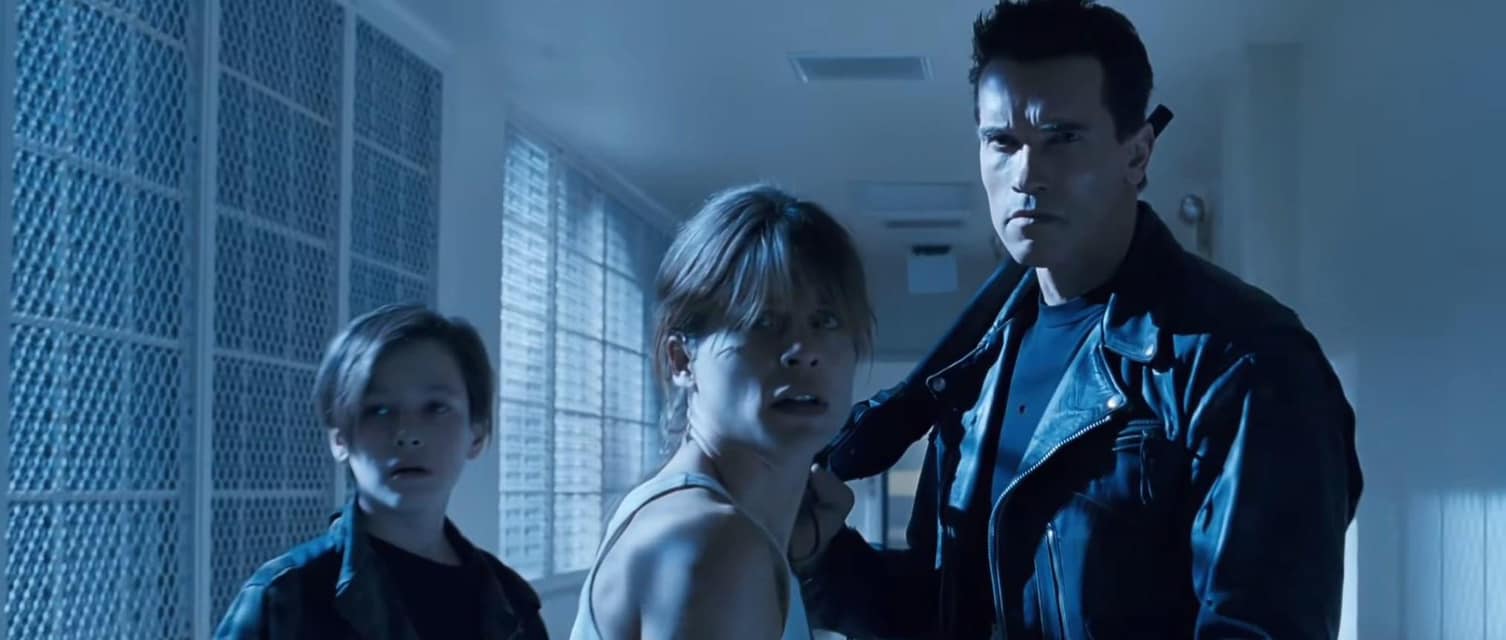Terminator 2: Judgment Day (1991)

Exploring the Depths of “Terminator 2: Judgment Day” (1991)
“Terminator 2: Judgment Day,” directed by James Cameron, stands as a landmark in cinematic history, renowned not only for its groundbreaking special effects but also for its profound exploration of themes such as fate, redemption, and the human condition. Released in 1991, the film is a sequel to the original “Terminator” (1984) and continues the saga of a dystopian future where machines wage war against humanity.
Plot Overview
The film picks up a decade after the events of the first Terminator. In this sequel, the Terminator (Arnold Schwarzenegger) is reprogrammed and sent from the future to protect John Connor (Edward Furlong), the future leader of the human resistance. Opposing him is a more advanced Terminator, the T-1000 (Robert Patrick), a shape-shifting liquid metal assassin sent to eliminate John and ensure the rise of Skynet, the artificial intelligence system that will bring about Judgment Day.
As the narrative unfolds, the film delves deeply into the relationship between the Terminator and John, showcasing an unlikely bond that evolves from mere protector and protected to a father-son dynamic. Sarah Connor (Linda Hamilton), John’s mother, also plays a crucial role, struggling with her knowledge of the impending apocalypse and her determination to alter the future.

Themes and Significance
- The Concept of Fate vs. Free Will: “Terminator 2” engages with the philosophical debate of fate versus free will. The notion that the future is predetermined and unchangeable is central to the story. However, the film posits that through human agency and determination, individuals can alter their destinies. This tension between predestination and self-determination is explored through John Connor’s journey and the efforts of his allies to prevent the apocalyptic future.
- Redemption and Transformation: A core theme of the film is redemption. The Terminator’s transformation from a cold, unfeeling machine to a protective figure for John Connor symbolizes a form of redemption. This transformation is mirrored in Sarah Connor’s own arc, as she evolves from a terrified victim into a fierce warrior fighting for a better future.
- The Nature of Humanity: The film also explores what it means to be human. The Terminator, despite being a machine, exhibits characteristics of empathy and sacrifice, raising questions about the essence of humanity. The contrast between the Terminator’s evolving sense of duty and the cold, calculating T-1000 highlights the complexity of human emotions versus artificial intelligence.
- Technological Paradoxes and Consequences: Cameron’s portrayal of a future dominated by machines serves as a cautionary tale about the potential consequences of unchecked technological advancement. The film reflects concerns about the ethical and existential risks posed by artificial intelligence, making it a prescient commentary on the impact of technology on society.

Legacy
“Terminator 2: Judgment Day” has left an indelible mark on both science fiction and action genres. Its revolutionary use of CGI and practical effects set new standards for visual storytelling, while its nuanced narrative and complex characters elevated it beyond mere spectacle. The film’s enduring popularity and critical acclaim underscore its significance as a thought-provoking and emotionally resonant cinematic experience.
In summary, “Terminator 2: Judgment Day” is not just an action-packed thrill ride but a profound exploration of fate, redemption, and what it means to be human. Its legacy continues to influence and inspire, making it a timeless classic in the realm of science fiction cinema.











